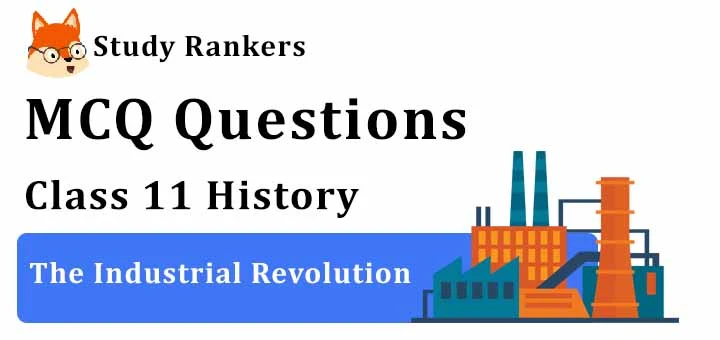MCQ Questions for Class 11 History: Ch 9 The Industrial Revolution

1. The Miner's Friend, a model steam engine, was built by -
(a) Matthew Boulton
(b) James Watt
(c) Thomas Newcomen
(d) Thomas Savery
► (d) Thomas Savery
2. During the ‘little railway mania’ of 1833-37 in Britain, the total railway lines built was
(a) 1400 miles
(b) 1500 miles
(c) 1600 miles
(d) 1700 miles
► (a) 1400 miles
3. The transformation of industry and the economy in Britain, between the 1780s and the 1850s, is called the
(a) first industrial revolution
(b) first agricultural revolution
(c) first technological revolution
(d) first communication revolution
► (a) first industrial revolution
4. To drain mines, the Miner's Friend was invented, in 1698, by
(a) James Watt.
(b) Thomas Savery.
(c) Thomas Newcomen.
(d) Matthew Boulton.
► (b) Thomas Savery.
5. In 1814, the railway engineer George Stephenson constructed a locomotive called
(a) ‘The Blutcher’.
(b) The ‘Puffing Devil'.
(c) The ‘Pumping Ghost’.
(d) The ‘Mighty Force’.
► (a) ‘The Blutcher’.
6. Initially, canals were built in England to
(a) transport coal to cities.
(b) transport food grains.
(c) transport people.
(d) transport raw cotton.
► (a) transport coal to cities.
7. Among the several factors which made Britain the first industrialised country, the one described as a major economic change, in 18th century, was
(a) Common laws.
(b) Single currency and market.
(c) Use of money as medium of exchange.
(d) Agricultural Revolution.
► (d) Agricultural Revolution.
8. By 1850s, most of Britain was connected by
(a) rivers.
(b) railways.
(c) canals.
(d) roads.
► (b) railways.
9. The first blast furnace was invented by
(a) Henry Cort
(b) Abraham Darby III
(c) Abraham Darby I
(d) Abraham Darby II
► (c) Abraham Darby I
10. The enclosure movement, which caused hardship to farmers, began from
(a) 1760s.
(b) 1770s.
(c) 1780s.
(d) 1790s.
► (a) 1760s.
11. The first railway line in Britain was constructed in _____ between the cities of Stockhom and Darlington.
(a) 1822 C.E.
(b) 1824 C.E.
(c) 1825 C.E.
(d) 1827 C.E.
► (c) 1825 C.E.
12. Which one of the following is not true regarding the demands of participants of Luddism?
(a) Fix working hours.
(b) Control over women and child labour.
(c) Employment for those who had lost their jobs due to coming of machinery.
(d) Right to form trade unions to legally present their demands.
► (a) Fix working hours.
13. Which one of the following is a machine that greatly contributed to the revolution in textile industry?
(a) Flying shuttle
(b) Watt steam
(c) The typewriter.
(d) The locomotive
► (a) Flying shuttle
14. _____ were those laws which prevented the import of cheaper food until prices in Britain had risen to a certain level.
(a) Wheat Laws
(b) Rice Laws
(c) Corn Laws
(d) Lentil Laws
► (c) Corn Laws
15. The first Derby invented a _____ in 1709 C.E.
(a) Flying shuttle
(b) Blast Furnace
(c) The typewriter.
(d) The locomotive
► (b) Blast Furnace
